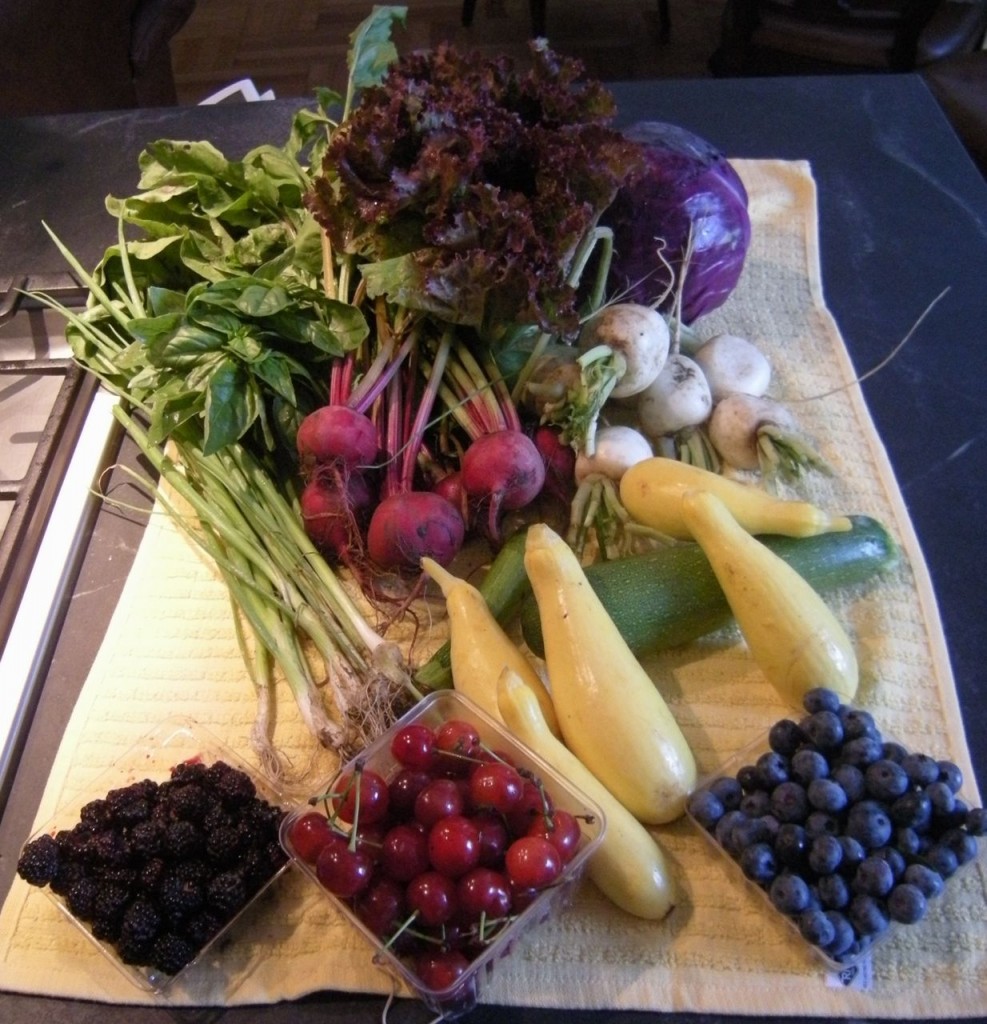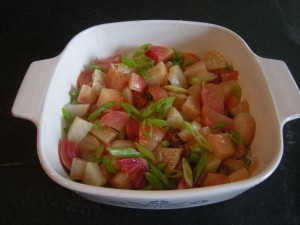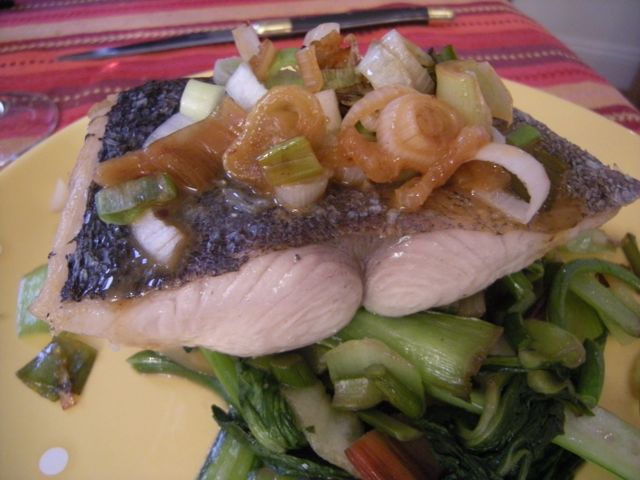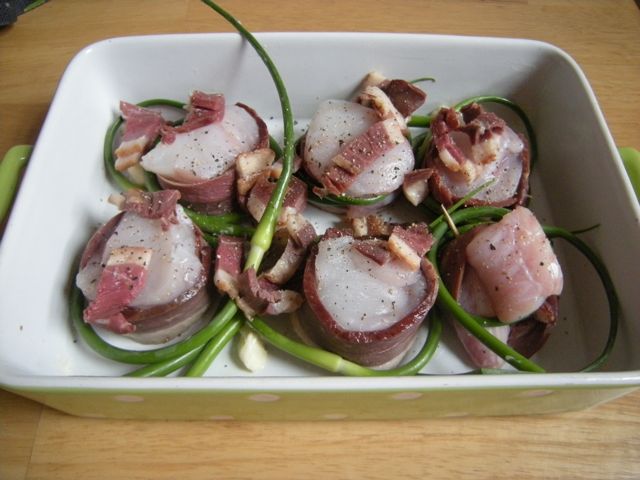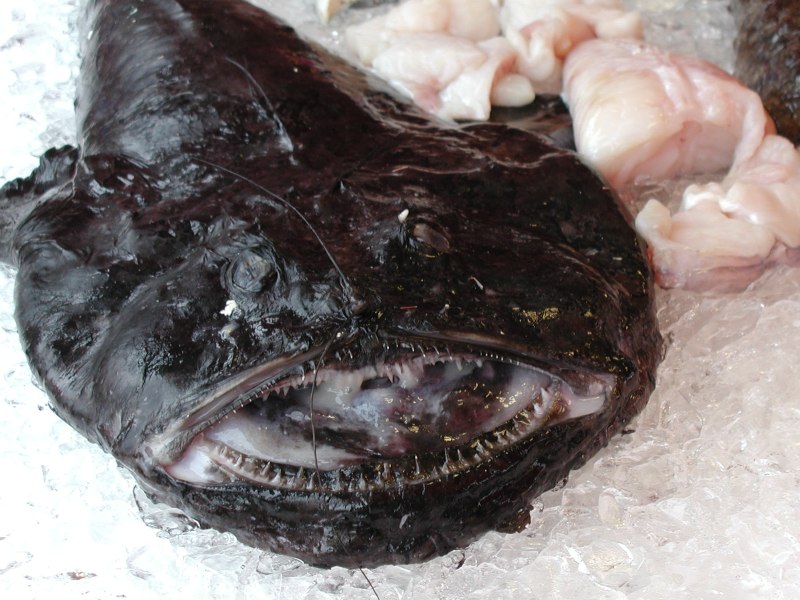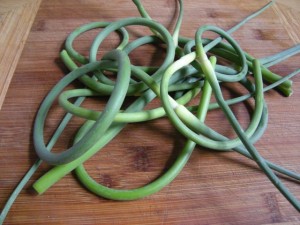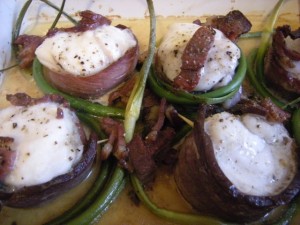Most of you probably know about Community Supported Agriculture (CSA), which has become a popular way for consumers to buy local, seasonal food directly from a farmer. This is how it works: a farmer offers a certain number of “shares” to the public. Typically a share consists of a box of vegetables, though other farm products may be included: as you can see above there are fruits. This year the Bay Ridge CSA program offered fruit shares. The consumers purchase a share (aka a “membership” or a “subscription”) and in return receive a weekly offering of seasonal produce throughout the farming season. “Our” farm is Hearty Roots Community Farm in Tivoli NY. I have not yet met the farmers personally, nor have I visited the farm, but so far I like their produce and the variety. I also like the way we get it; instead of getting the traditional prepacked individual box, we are instructed what to take and we get to pack our own from the bulk crates (except for the fruit, but that is from another farm anyway). C.S.A arrangement creates many rewards for both the farmer and the consumer, if you want to read more on the subject click here. I do share a share with my older son’s family and this is what we got this week.
Veggie Share:
8 scallions
1 head of lettuce
2lb of zucchinis
1 red cabbage
1 lb of japanese turnip
1 lb of Chioggia beets
1 bunch of basil
Fruit Share:
1/2 pint mulberries
1 pint sour cherries
1 pint blueberries
I boiled the beets until tender and dressed them with fresh scallions, sprinkled with olived oil, salt & pepper. I saved the beets greens and mixed them with sautéed potatoes. What I really like is to discover what I am getting and I can’t wait to get home and start processing my new bounty.
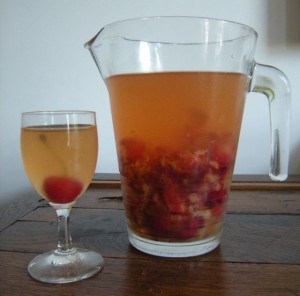
The sour cherries were a little disappointing. They didn’t have much taste raw, not really sour enough to make an interesting sauce — I used to make a wild salmon with sour cherry sauce. As they were very pretty, I had the vision that they might enhance a not so great white wine I had sitting in the fridge. Bingo! This made a great summery aperitif! Let’s call is Sour Cherry Sangria! I crushed the cherries in the wine, added one dash of maple syrup plus one serious dash of grappa. Let it is sit for a few hours in the fridge. Strain and serve in small glasses with a fresh sour cherry at the bottom! Enjoy the summer — and the next post should be from my dear Pyrenean mountains. Adishatz!


